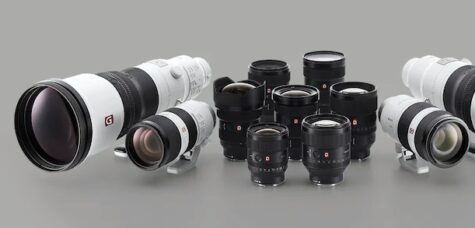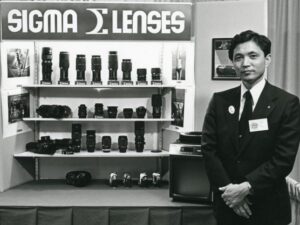A recent overview of full-frame mirrorless lens ranges by Richard Butler in DPReview showed Sony Alpha owners to have around four times as many options as Canon and Nikon owners.

In between sits the L-mount cameras from Panasonic, Leica and Sigma, for which all three camera makers offer their own lenses.
The survey was limited to autofocus lenses within the focal length range of 14-200mm. Lower-end, variable aperture zoom ‘kit’ lenses are omitted, as were big telephotos. This was by no means a full listing of everything available from the camera makers, but nonetheless illustrative. There is also the matter of cross-format compatibility to take into account, with both Canon and Nikon providing compatibility with their DSLR lenses via mount adaptors.
Within the segment DPReview looked at, Sony had a total of over 80 options (the majority of them prime lenses), while Canon only had 15, and Nikon 13. The L-mount gang had 31.
To be fair to Canon, it’s full-frame mirrorless RF range extends to way more than 15 lenses – there are over 20 listed at canon.com, including the zany new 5.2mm Dual Fisheye lens, and there are some budget options among the range.
Nikon lists 21 Nikkor full frame mirrorless lenses listed on its US website. There were 20 lenses listed for Nikon Z-mount in the DPReview article. There were no third-party Canon RF lenses listed, and only a handful of ‘cloney’ options from have-a-crack-at-anything Chinese manufacturer Viltrox, with some cheap and, well, cheaper takes on the originals.
Sony, on the other hand, had options from no less than seven lens manufacturers: Sony (of course); Sigma; Samyang; Tamron; Tokina, Viltrox; and Zeiss. The L-mount had options from Sigma, Leica and Panasonic.
The relative scarcity of Canon and Nikon lens options seems largely due to both companies opting not to share lens design details with third party lens makers such as Sigma and Tamron, hindering development. The five-year head start Sony had in full-frame mirrorless lenses adds to the challenge to Nikon and Canon.
The temptation to lock customers into a closed system, a la Apple, is financially understandable and the camera makers would no doubt argue it ensures the their camera and lenses perform as an optimal system. From a prospective customer’s point of view, though, the freedom of choice offered by third party lens-making specialists, at better dollar-for-dollar value, is attractive.
The camera makers might not want to accept this, and the camera retailers might see it as a second order issue, but the camera purchasers who take the trouble to explore their options could find the dozens of E-mount lenses available from a range of suppliers a ‘Unique Selling Proposition’ for Sony, and the L-mount camera-makers also have a better lens offering. The current global supply shortages for cameras and lenses only underscores the choice issue.

Yet while the decision by Canon and Nikon to close out third party lens manufacturers from developing optics for the Canon RF and Nikkor Z formats is a high-stakes gamble, the logic behind it is compelling.
Sigma fundamentally changed the lens business, and consequently the equation for camera purchasers, when it introduced its first premium ‘Art’ lenses in 2014, at between one-third and one-half the cost of the Canon and Nikkor DSLR equivalents. Until then, the Japanese thirds-party lens makers such as Cosina, Sigma, Tokina and Tamron operated mainly in the low to mid-market.
In fact, this fundamental change can be sheeted home to the drive and vision of one person – Sigma’s CEO, Kazuto Yamaki.
Since then Tamron has followed suite and developed its own premium range, while the Sigma stable of wide aperture premium primes and zooms has expanded and been refined. The latest Sigma ‘i’ series lenses deliver premium performance but without the weight and bulk of those first lenses. They currently can’t be beaten when assessing the intersection of price, performance and usability.
A brave decision?

The effective de-construction of their premium lens monopolies would have been financially punishing for Canon and Nikon, who until then had that market all to themselves, apart from even more expensive lenses from the likes of Zeiss. Add to that the plethora of Chinese and Korean brands offering cheap and sometimes exotic alternatives (eg, the Laowa Probe!) and the ‘orderly market’ Canon and Nikon had enjoyed is out the window.
To deny your prospective customers the option to choose from a much deeper – and generally less expensive – pool of lens options, all other things being equal, seems…what? Brave? Arrogant? Astute? Time will tell. The fortunes of Nikon, now the third brand in cameras, having given up the second place to Sony, will be particular interesting in the next 12 to 24 months.
Sigma has not discounted jumping into manufacture for Canon RF and Nikkor Z, but ‘so far…the number of orders for our lenses is still above our manufacturing capacities, and especially the capabilities of our R&D department,’ Kazuto Yamaki explained recently. So it seems that until Canon and Nikon are willing to provide a path of less resistance for Sigma’s R&D boffins than re-engineering the Z and RF technology from scratch, there are easier paths to success for the pioneering lensmaker. But if I were the king of Nikon, I’d be getting those Nikkor Z specs over to the Sigma factory in Aizu (‘the land of the last samurai’) as soon as possible.
– Keith Shipton





Be First to Comment